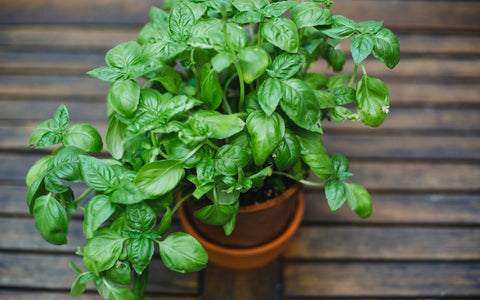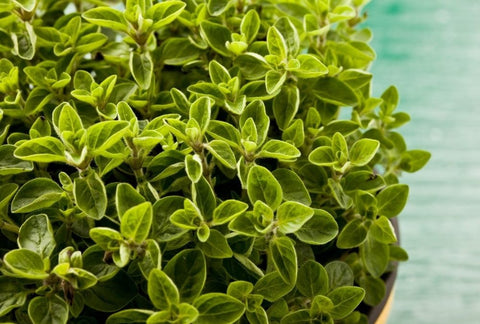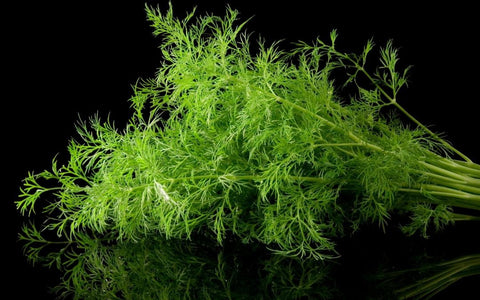Basil is one of the easiest herbs to grow and has a great variety of types and uses, especially in cooking. We've discussed growing basil indoors, but you might be curious about growing it outdoors.
In this blog, we’ll cover growing basil outdoors, including basic facts, supplies, setup, steps to grow, care for and harvest it, and how gardening zones in the US can impact outdoor gardening.
| Plant type | Annual |
| Family | Lamiaceae |
| Binomial name | Ocimum basilicum |
Timing |
Basil sprouts in 1-2 weeks and can be harvested from Month 2+ on. |
Full sun |
Growing basil requires at least 6+ hours of direct sun [DLI of 18+ mol/m²/day]. |
Care |
Growing basil outdoors is beginner-friendly, but it can involve more processes than growing indoors. You’ll sprout, thin, prune, harvest, and occasionally manage pests and other problems. |
TABLE OF CONTENTS
Ways to Grow Basil | Care and Maintenance for Basil | Timeline & Steps
Ways to Grow Basil Outdoors
Growing Basil Outdoors Using Soil
Basil plants generally do well in moist soil conditions. If the soil dries out completely, the roots will die back, making it tough for the plant to recover. On the other hand, if the roots are exposed to standing water for too long, they can rot.
You have two options to choose from when growing basil outdoors:
- Plant directly onto soil, or
- Use a container with drainage!
If you prefer planting directly onto soil, you can use potting mixes you can buy from stores or online, or you can also create your own. In this blog, we explained how to create your own potting mix. Herbs like basil thrive more in nutrient-dense soils, so if you don’t have that, consider incorporating plant foods or fertilizers.
We prefer using containers as we have more control over the growth of herbs using this method. Some herbs can grow aggressively and take over garden beds or soil sites. If you opt for containers, they should have good drainage as herbs like basil thrive well in this kind of environment.
If you’re not sure what size of pot or container to use for your herbs, check this out.
Other Ways to Grow Basil Outdoors
You can also use ollas (plant watering spikes/globes) for your containers to help with drainage. Raised beds are a good choice for growing herbs like basil outdoors, too.
Best Gardening Zones for Growing Basil Outdoors
Basil loves warm weather and moist soil, making zones 4-10 ideal for growing basil. If you’re not in these zones, consider growing your herbs indoors instead.
To know more about growing basil indoors, check this out.
Care and Maintenance of Basil Outdoors
Lighting for Growing Basil Outdoors
Place your basil plant in a spot where it can get at least 6+ hrs of direct sunlight daily, as it loves full sun and warm weather.
Right Temperature for Your Outdoor Basil Plant
Basil Plants Grow Faster in Warmer Temps
Basil plants are "warm-weather crops" and will speed up their metabolism in warmer temperatures. If temperatures get too hot, they’ll wilt and become prone to disease. Ideal temperatures are around 80°F but anything between 50 and 90°F works well.
Water and Humidity
Herbs like basil thrive on consistent moisture but can suffer if waterlogged, so make sure to water regularly, especially if using soil. To avoid your basil being waterlogged, use a pot with drainage, ollas (self-watering globes/spikes), or raised beds.
Nutrients and Fertilizers
Basil likes to start with nutrients that are equal parts nitrogen, phosphorus, and potassium (NPK 10-10-10). For this Balanced Blend, we recommend: Dr Earth All Purpose.
Once they are growing, it’s better to use plant food high in nitrogen (NPK 10-5-5). For this Herb Blend, we recommend: Joyful Dirt All Purpose.
When to Move Your Basil Plant Indoors
Basil mostly thrives in warm temperatures, so we suggest moving your basil plant indoors only when the temperature outdoors drops below 50°F. Basil is hardy and can stand temperatures as low as 50°F, but its leaves may turn black due to the cold. To learn more about how to grow your basil indoors, check this out.
Common Problems with Growing Basil Outdoors
Pests
Common pests for basil include slugs, Japanese beetles, and aphids. Use insecticidal soap or azadiractin to manage these pests. For more details, click here.
Diseases
Basil can suffer from leaf spots, mildew, wilting, and mold. For solutions to these diseases, read this helpful article from plantvillage.psu.edu.
Timeline and Steps on How to Grow Basil Outdoors
Best Setup for Your Outdoor Basil Plants
Below is the best setup for growing your basil plants outdoors. You’ll need:
- Planter: Use a planter with good drainage or ollas, or opt for raised garden beds.
- Soil: Standard Potting Mix
- Plant Food: At the start: Balanced Blend (NPK 10-10-10). Ongoing: Herb Blend (NPK 10-5-5).
Starting your Basil: Seed vs Cutting vs Nursery Plant
New Basil plants can be started from seed, propagated from an established plant, or purchased live at many garden centers. We prefer to sprout from seed or propagate from a stem cutting, as it results in plants that are adapted to your growing conditions and limit the chances that you accidentally bring home pests.
How to Plant Basil seeds

Basil grows quickly from seed. Plant 5 sites in a 4" / 1-pint container. In larger containers, space sites 2" apart. For each site, plant 2 seeds 1/4 inch deep. Keep the soil warm (65-85°F, ideally 70°F). Sprouts typically appear in 5 days but can be as quick as 3 days or as long as 7 days depending on your conditions.
How to Transplant Basil

Live starter plants give you a big jump start on your first harvest. When you’re in a garden center, pick the bushiest plant available (tall and lanky ones will be weak growers) and give it a good inspection for pests. Leaves should be dark green without holes, spots, or curled edges. A best practice is to actually “quarantine” your plant for about a week after bringing it home to make sure it's free and clear of ride-on pests.
Ensuring it’s pest and disease-free, it’s time to transplant your seedling into its final home.
- Remove some soil from its final planter - leaving enough space for the bottom of the seedling to be just higher than the soil surface.
- Hold on to the base of the stem with one hand, and turn the pot over while gently pulling the seedling. Giving the pot a few squeezes can help dislodge it.
- Place in its final container and fill around it with soil so that it’s tight, but not compacted.
Week 1-2: Check for Sprouts
You could see seedlings in as little as 3 days (though 5 days is more typical). If it’s been 7 days and you still don’t have any sprouts, it’s likely that your setup is too cold.
Week 2: Thin Your Seedlings

Thin your planter to only have 1 seedling per site - leaving the largest plant. If you are using the recommended planter (at least 4" / 1 pint) this will mean you’ve got 5 plants after thinning. By getting rid of the smaller seedlings, you’re allowing the biggest and strongest one to flourish by reducing its competition for water, food, and space. If your seedlings are under 1 inch, stretching out, or folding over, it’s likely that they don't have quite enough light.
Week 4: How to Prune Basil Plants

Once your Basil plant has 3 sets of mature leaves, you’re ready for your prune. Cut off the top set of mature leaves, leaving the bottom two. It’s best to cut right above the pair of leaves you’re keeping on the plant. Once these branches grow out (and each has a few sets of their own leaves) you can cut the tip - just as you did with the main stem. At this point your plant will be fairly well-shaped, so hone your inner Bonzi master and use your thinning and heading cuts to harvest and shape your herbs as you go.
Month 2+: How to Harvest Basil
As your basil continues to grow, keep harvesting to encourage growth. If you only want a couple of leaves, pick leaves where new ones are emerging at the base. For a bigger harvest, cut one of the stems directly. You shouldn't harvest more than 1⁄3 of the plant at a time.
How to Use Your Freshly-harvested Basil in Cooking
Basil is a staple herb used by chefs around the world. Basil can be used in many ways:
- Toppings or combined with pasta
- Snacks or appetizers
- Toppings for soups, sandwiches, or any other dish you can think of
Check out some more of our favorite basil recipes here.
How to Preserve Basil
There are several ways to preserve or keep your herbs fresh, and here are just some of the easiest and the ones we recommend the most:
- Lazy person technique. It involves keeping the fresh herbs in their original packaging and simply storing them in the fridge.
- Storing the herbs in a glass of water inside the fridge. You can do this by cutting the end of the stem of your herb, filling a glass jar or cup with water, and placing your herb inside. Almost like a vase or bouquet of herbs!
- Keep in a glass of water under natural lighting.
- Wrap loosely in a damp paper towel.
- Freeze them herbs! Yes, you can freeze fresh herbs such as basil to use at a later time! All you need are some ice cube trays and a freezer, and you’re all set.
Learn more about how to preserve and keep your herbs and basil fresh here.
Month 6+: End of Life
Once your basil plant is mature, it’ll decide that it’s time to make seeds & die off. Delay this by clipping flower stalks as soon as you see them. It’s best to catch them as early as possible.
If you’d like to learn about the dozens of other herbs, fruits, and vegetables that you can grow indoors or outdoors, then grab a copy of our free eBook below.
We hope that this blog has given you everything you need to know about growing basil outdoors. In case you have any questions, just leave a comment below.









There are no comments for this article. Be the first one to leave a message!